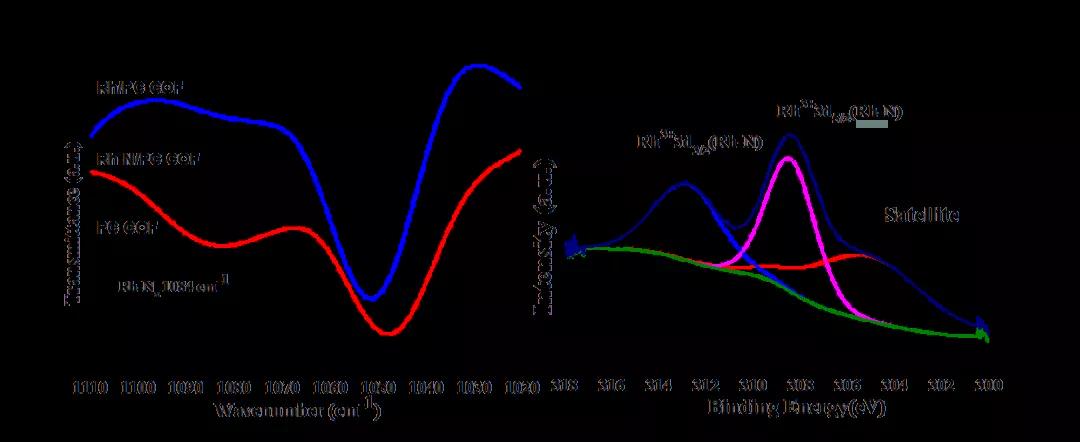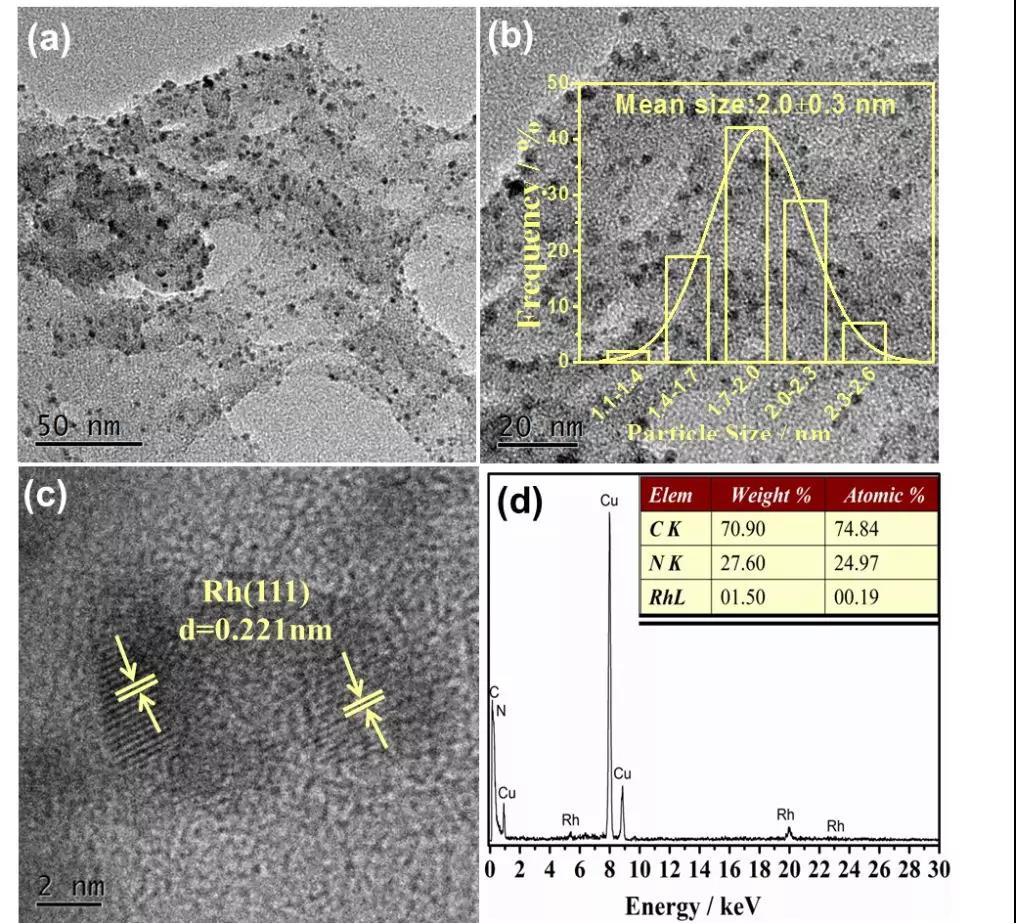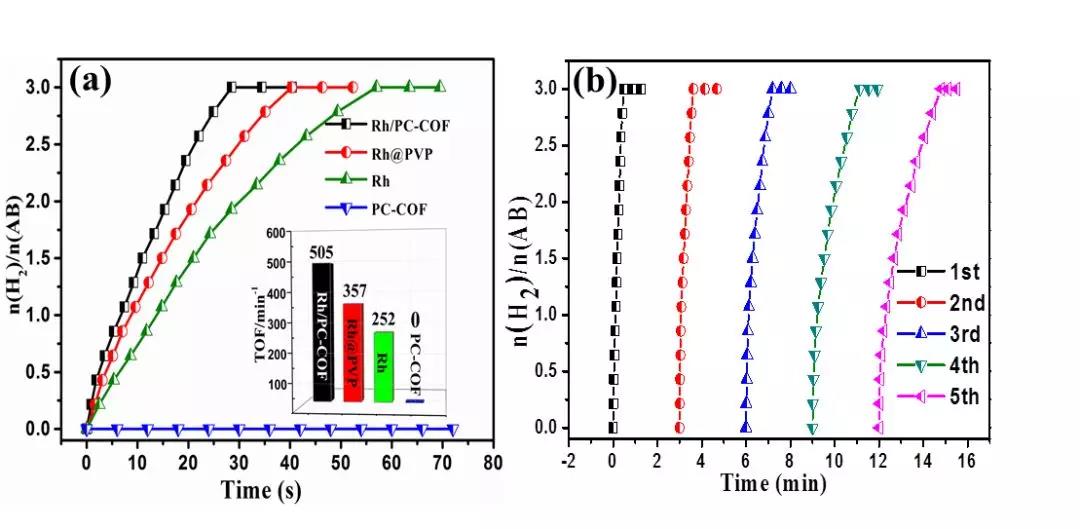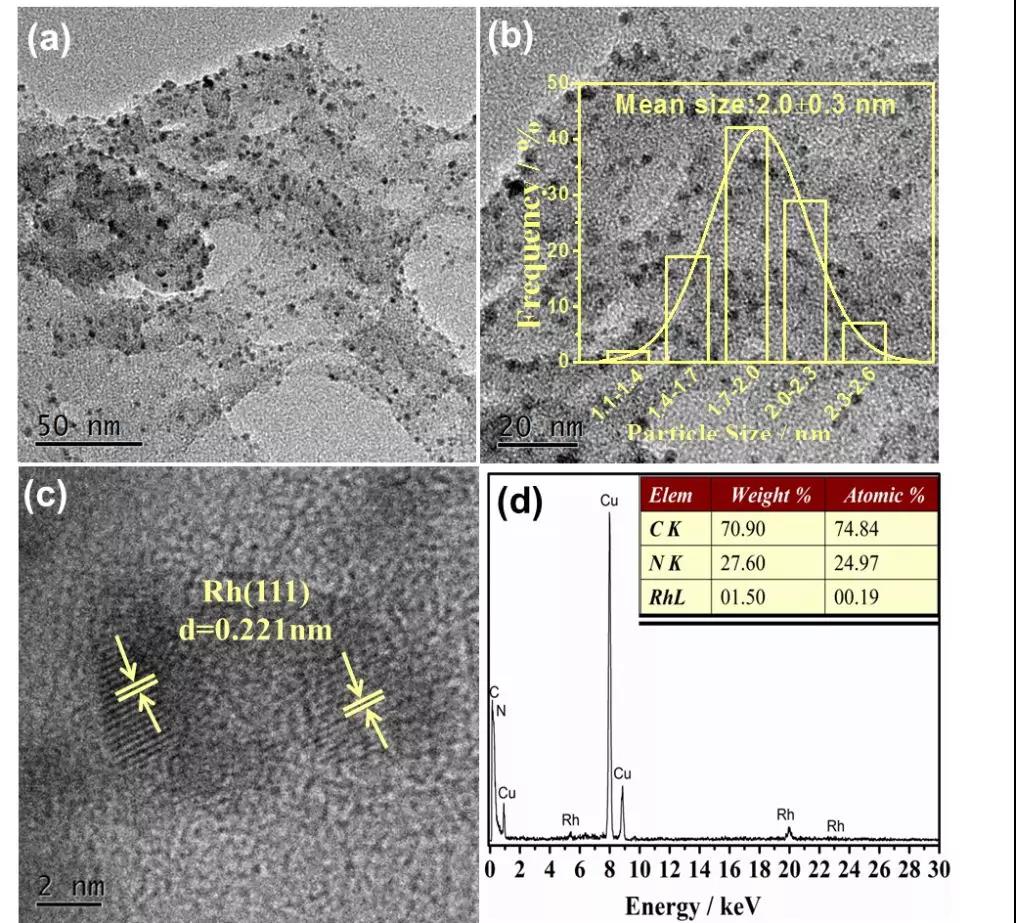[ICF] Synthesis of Rh Catalyst Based on COF Coordination Reduction and Its Application in Aminoborane Alcoholysis
QQ Academic Group: 1092348845
Detailed
Recently, Lu Zhanghui‘s group from Jiangxi Normal University used a coordination reduction strategy for the first time to prepare a confined Rh / PC-COF catalyst using a cheap covalent organic framework material PC-COF as a carrier, and realized that metal Rh nanoparticles in the COF channel Precise packaging.
This work uses low-cost COF with high nitrogen content (39.47 wt%) as the carrier. First, metal ions are stabilized in the pores of the COF material through coordination, and then the metal complex is reduced to nanoparticles by in situ reduction. Precise packaging of ultra-fine metal nanoparticles.

Figure 1: Schematic diagram of Rh / PC-COF synthesis
First, the existence of Rh-N coordination bonds in the complex Rh-N / PC-COF was proved by FT-IR and XPS techniques.

Figure 2: FT-IR and XPS characterization of Rh-N / PC-COF
The characteristic absorption peak of Rh-N bond appeared at 1084 cm-1 in Rh-N / PC-COF in FT-IR, disappeared in Rh / PC-COF, and Rh (Ⅲ) in XPS existed as Rh-N. No characteristic peak of RhCl3 (310.0 eV) was detected, indicating that Rh exists as a coordination bond Rh-N in Rh-N / PC-COF.

Figure 3: TEM, HRTEM, and EDX spectra of Rh / PC-COF
The TEM image shows the highly dispersed state of rhodium nanoparticles. The particle size statistics show that the prepared rhodium nanoparticles have a narrow particle size distribution (1.4-2.6 nm), and the average particle diameter is smaller than the average pore diameter (3.7 nm) of the COF itself. ), Indicating that rhodium nanoparticles are confined in the channels of COF.

Figure 4: BET-BJH characterization of PC-COF and Rh / PC-COF
The BET and BJH results show that the specific surface area and average pore diameter of Rh / PC-COF are smaller than that of PC-COF after loading metal nanoparticles, which proves that Rh nanoparticles were successfully encapsulated in the COF pores.

Figure 5: Rh / PC-COF catalytic performance and stability
The synthesized Rh / PC-COF catalyst showed super high catalytic activity in the alcoholysis hydrogen production reaction of ammonia borane (NH3BH3 + 4CH3OH → NH4B (CH3O) 4 + 3H2). At room temperature, its conversion frequency TOF is as high as 505 min-1, which is much higher than Rh @ PVP and pure Rh nanoparticles. It is the most active ammonium alkanolysis catalyst that has been reported so far.
This work provides a feasible approach for preparing encapsulated ultrafine MNPs composite catalysts using COFs as carriers. In theory, all porous materials containing N, S, and P can be used to prepare encapsulated MNPs catalysts through coordination reduction strategies. This is of great significance for the development of design methods for encapsulated catalysts. It is worth noting that the confined metal nanoparticles obtained by in situ reduction have a high degree of dispersibility and a relatively narrow particle size distribution, which has significantly improved stability, and is more suitable for catalytic oxidation, hydrogenation, dehydrogenation and other reactions.
Inorg. Chem. Front., 2020, Advance Article
http://dx.doi.org/10.1039/D0QI00073F
Source: Frontiers Journals
- Previous: Nature Today: Nobel Pr
- Next: A Rising 2D Star: Nove


 Academic Frontier
Academic Frontier
